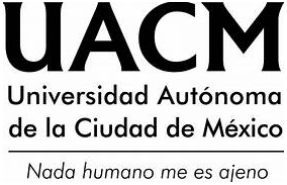Intermediate zones of culture. Reflections on the (historiographical) problem of contemporaneity
DOI:
https://doi.org/10.29092/uacm.v13i31.437Keywords:
Contemporaneity, extemporaneity, historiography, in-between zones, new media artAbstract
This paper addresses the historiographical complexity implied in the analysis of contemporary phenomena from our own temporal and spatial contemporaneity. Particularly, the paper examines new media art practices, which are situated between the evasive instant of the present and the past that is continuously being left behind. As a result, new media art has turned into an in-between zone, since it surpasses the boundaries imposed by “guardians of frontiers” and “historians with time phobia”. After inspecting eight philosophical notions referred to the untimely occurrences that interrupt the continuum of the history, the article concludes by stating that the extemporaneity embodied by those in-between zones is paradoxically the most suitable strategy to tackle contemporaneity.
Downloads
References
Agamben, G. (2008), Che cos’è il contemporaneo?, Roma: Nottetempo.
Alberro, A. (dir. y ed.) (2011), ¿Qué es el arte contemporáneo?, Pamplo¬na: Universidad Pública de Navarra.
Barthes, R. (2003), Cómo vivir juntos. Simulaciones novelescas de algunos espacios cotidianos, Buenos Aires: Siglo xxi [1976-1977].
Barthes, R. (2012), La cámara lúcida. Notas sobre la fotografía, Buenos Aires: Paidós [1980].
Benjamin, W. (2009), “Tesis sobre filosofía de la historia”, en W. Benjamin, Estética y política, Buenos Aires: Las cuarenta [1940].
Danto, A. (1999), Después del fin del arte. El arte contemporáneo y el linde de la historia, Barcelona: Paidós.
Deleuze, G. (2013), Lógica del sentido, Buenos Aires: Paidós [1969].
Derrida, J. (2005), La verdad en pintura, Buenos Aires: Paidós [1978].
Didi-Huberman, G. (2006), Ante el tiempo. Historia del arte y anacronismo de las imágenes, Buenos Aires: Adriana Hidalgo [2000].
Didi-Huberman, G. (2010a), Lo que vemos, lo que nos mira, Buenos Aires: Manantial [1992].
Didi-Huberman, G. (2010b), “Un conocimiento por el montaje. Entre¬vista con Georges Didi-Huberman”. Entrevista disponible en [http://anacrespodeluna.blogspot.com.ar], 18 de julio de 2014.
Ginzburg, C. (1989), Mitos, emblemas, indicios. Morfología e historia, Barcelona: Gedisa [1986].
Ginzburg, C. (2010), “Carlo Ginzburg: ‘yo no escribo verdad entre comillas’”. Entrevista disponible en [http://edant.revistaenie. clarin.com/notas/2010/08/21/_-02207464.htm], 4 de agosto de 2014.
Giunta, A. (2014), ¿Cuándo empieza el arte contemporáneo?, Buenos Aires: Fundación arteBA.
Gombrich, E. (1992), “La ambivalencia de la tradición clásica. La psicología cultural de Aby Warburg (1866-1929)”, en J. E. Burucúa (comp.), Historia de las imágenes e historia de las ideas. La escuela de Aby Warburg, Buenos Aires: Centro Editor de América Latina [1984].
Huyssen, A. (1998), Después de la gran división. Modernismo, cultura de masas, posmodernismo, Buenos Aires: Adriana Hidalgo.
Michaud, Y. (2007), El arte en estado gaseoso. Ensayo sobre el triunfo de la estética, Buenos Aires: Fondo de Cultura Económica (FCE) [2003].
Shanken, E. (2013), Inventar el futuro. Arte, electricidad, nuevos medios, Nueva York: Departamento de Ficción.
Smith, T. (2012), ¿Qué es el arte contemporáneo?, Buenos Aires: Siglo xxi.
Warburg, A. (2010), Atlas Mnemosyne, Madrid: Akal.
Wind, E. (1993), La elocuencia de los símbolos, Madrid: Alianza.
Published
Issue
Section
License
This Journal is licensed under Creative Commons Mexico 2.5. It is allowed to reproduce and disseminate the contents of the Journal for educational or research purposes, not for profit, as long as they are not mutilated and cite the source (Andamios, Revista de Investigación Social) and the author.
The copyright of the articles published in Andamios, Revista de Investigación Social are transferred by the author(s) to Universidad Autónoma de la Ciudad de México when the originals have been accepted, so that they are published and distributed both in the printed and electronic versions of the Journal. However, as established by law, the author(s) retains their moral rights. The author(s) will receive a form of assignment of copyright that they must to sign when their original has been accepted. In the case of collective articles, the signature of one of the authors will suffice, provided that the latter has obtained the consent of the others.
Authors may use the material of their article in other works or books published by themselves, with the condition of quoting Andamios as the original source of the texts.
The articles contained in this publication are the responsibility of their authors and do not compromise the official position of Andamios, Revista de Investigación Social of the Universidad Autónoma de la Ciudad de México.


